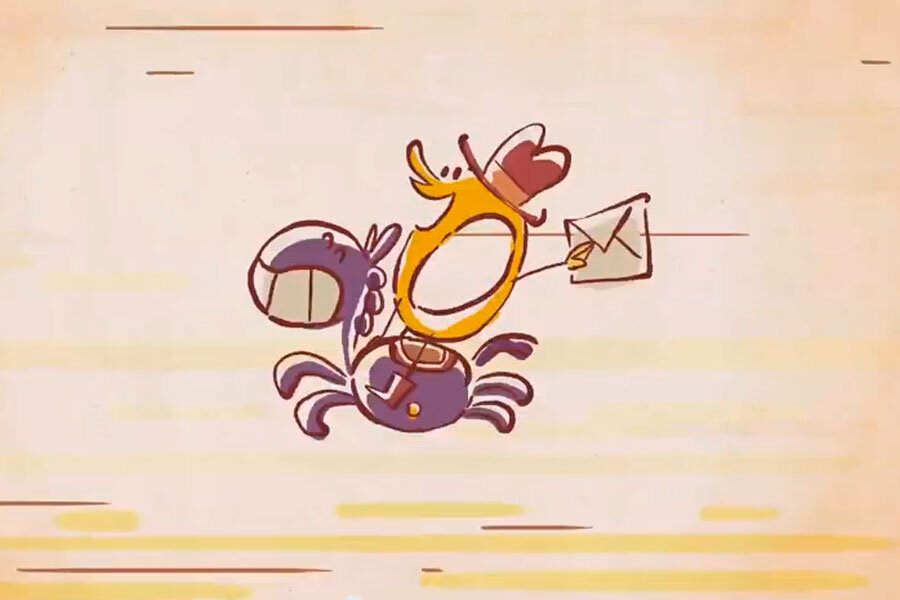When was the first mail delivered via the Pony Express, asks Google Doodle
Loading...
Tuesday’s Google Doodle asks a question, "When was the first mail delivered via the pony express?" The historical query celebrates the 155th anniversary of the first delivery from the Pony Express. Google brought together five of its “doodlers” to create a cartoon Wild West where you control a rider with keyboard arrows while collecting stray mail and avoiding (some surprise) obstacles.
It is actually rather ironic that Google decided to honor this particular achievement in communication with such zeal – and not just because the rumored Gmail bill-paying service is codenamed Pony Express.
For those who are a bit rusty on their basic US History, the Pony Express was created in response to the Civil War and the Great California Gold Rush. In the 1800s, as individuals flocked to the West Coast in search of fortune and the country teetered on the brink of war, three businessmen saw an opportunity. The standard delivery time for letters ranged from weeks to months in 1860, and William H. Russell, William B. Waddell, and Alexander Majors believed they could change that with the Pony Express. The service opened on April 3 with riders conquering the treacherous trail in an unheard of 10-day sprint.
“The fact that [the mail] came in 10 days, instead of a month or in a month and a half, that was the excitement,“ says Nancy Pope, historian and head curator for the Smithsonian’s National Postal Museum. “In that era, it was suddenly like e-mail was born over letter writing. We don’t have to wait this huge length of time to get that information and it's now coming very, very quickly.”
Ms. Pope calls the Pony Express a “revolution ... even if it was not a postal system,” a fact that many who visit the museum miss. But just because the US Postal Service did not get in on the ground floor, doesn’t mean the governmental mail service didn’t see potential in the rehashed idea.
The Pony Express was a financial disaster and only lasted for about 18 months. Why? Because competition from a national telegraph wire made the service obsolete. A group of investors, the most famous today being Wells-Fargo, bought up the pieces of the company. John Butterfield, founder of Overland Mail Company, later took over the western half of the trail and was granted federal contracts for expansion and funding that the Pony Express merely dreamed of.
While the Pony Express was never a part of the US Postal System, the mailing services faced the same threats then as the USPS faces now: profitability and advancing technology.
It may seem as if all forms of mail delivery are completely unprofitable – especially in the age of technology – but as Pope explains, like many industries, USPS had its good years and its bad years.
Before 1971, the post office would jump from the red to the black to breaking even on a budget. What really hurt the postal service was when Congress in the 70s determined that Postal Service should operate on stamp revenue, instead of receiving funding from tax dollars. We now live with the effects from this decision.
Another seemingly satirical woe that plagued both the Pony Express of the Wild West and the US Postal Service of the 21st century was technology.
Just as changing times and faster forms of communication brought the end of the Pony Express, the postal service has had to adjust for the most advance technological period of human existence and its main competitor: the Internet.
As Pope explains, thanks to e-mail and e-documents, bills and insurance statements, which used to require first-class mail to and from a destination, can now be sent for free.
“[The move online] is sending first-class mail numbers down very fast, very far,” says Pope. “And because first-class mail made up the majority of the revenue for the postal service, that’s been their problem.”
“On the other hand, nothing takes without giving,” she says.
While the birth of the Internet may have brought the slow demise of the hand-written word, it provides an abundance of potential revenue for the postal service to build on.
“The Internet has taken a big chunk out of first-class mail, but on the other hand, it is giving back in spades.... You can buy anything you want online, but unless you’re buying software, it has to be brought to your house,” says Pope. “So the package delivery is going up just as first class is going down.”
In addition to the bump in revenue from packages, USPS has also been testing grocery delivery and making deal with Amazon for Sunday packages, says Pope. Even though the government sector has had its hands pretty much tied by Congress, it is still working to advance with the times.
The Postal Service "is testing all the different things they can do to figure out how to make their place work better in the new century, and how to make the Postal Service ... remain relevant,” says Pope. “It always has been a big part of American history.”
That history includes establishing a right to privacy while your mail was in transit and assisting in the advancement of railways, commercial aviation, and communication through the telegraph.
A person’s relationship to the post office also depends on location, as Pope points out. While city-dwellers may see the post office as slow and unneeded, those in rural areas have a huge dependence on the service, which are coincidentally the most expensive to upkeep.
While some have asked if the postal service will go the way of the Pony Express, if you ask Pope, it is bigger than that. USPS is a public service that has led the way in establishing some basic rights we take for granted.
“[The Postal Service] exists to ensure there is a communication system that everybody has access to. [It doesn’t matter if you’re] in the US or a territory, you get mail service,” says Pope “It doesn’t matter if you’re in Alaska and we have to fly in [your mail] that costs $18,000 a flight, it doesn’t matter.... You have a right to it.”








